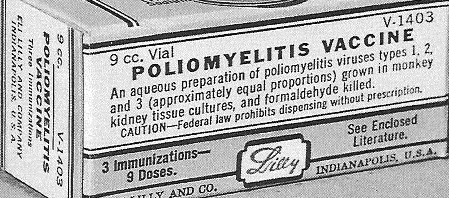
Lawmakers in the state of Minnesota have decided formaldehyde, a known cancer-causing agent, is too dangerous for children’s products. According to section 325F.175 of HF458, products containing formaldehyde are banned from being sold starting August 1st, 2014, for manufacturers and August 1st, 2015, for retailers. [1]
Finally, an answer to one of the many toxic ingredients being injected into your child?
Not so fast.
At first blush, it appears Minnesota is addressing at least one of the many toxic chemicals found in vaccines. However, a carefully crafted paragraph creates a loophole for excluding vaccines from this ban.
The Pharmaceutical Loophole
So, how is formaldehyde banned in toys and clothes but permitted to still be in vaccines? The new Minnesota state law exempts vaccines through this passage in a section entitled “[325F.174] DEFINITIONS.”
It reads:
“(c) “Children’s product” means a product primarily designed or intended by a manufacturer to be physically applied to or introduced into a child’s body, including any article used as a component of such a product and excluding a food, beverage, dietary supplement, pharmaceutical product or biologic, children’s toys that are covered by the ASTM International F963 standard for Toy Safety, or a medical device as defined in the federal Food, Drug, and Cosmetic Act, United States Code, title 21, section 321(h), as amended through February 15, 2013.” [1] (emphasis mine)
Frankly, I’m puzzled. Lawmakers don’t want your child to play with or put into their mouth products containing formaldehyde, but if your doctor injects it into your baby, it is perfectly fine?
[adrotate banner=”10″]
Let’s Look at Which Vaccines Contain Formaldehyde
You may be asking, “Why is there formaldehyde in vaccines?”
The very short answer is this chemical has been used for over half a century in the vaccine manufacturing process. It was originally used as an attempt to inactivate the poliovirus in the first vaccines produced by Jonas Salk in the late 1940s and early 1950s. [2]

Formaldehyde did not inactivate all viruses in the vaccine. Do more research on the polio vaccine contamination with the cancer causing monkey virus, SV40.
After the polio vaccine, formaldehyde was heavily used in manufacturing pediatric vaccines.
To see how many vaccines contain this cancer-causing chemical today, let’s take a look at the Children’s Hospital of Philadelphia website. The formaldehyde content of vaccines licensed for use in the United States (quantity per dose converted from mg to mcg): [3]
Trade Name / Quantity (per dose)
- Td / DT: ≤ 20 mcg – 100 mcg
- Daptacel: ≤ 100 mcg
- Infanrix: ≤ 100 mcg
- Tripedia: ≤ 100 mcg
- Pediarix: ≤ 100 mcg
- Havrix: ≤ 50 mcg (pediatric)
- Vaqta: 4 mcg (pediatric)
- Twinrix: ≤ 100 mcg
- Comvax: < 0.4 mcg
- IPOL: ≤20 mcg
- JE-Vax: < 200 mcg
- ADACEL: < 5 mcg
- Boostrix: < 100 mcg
- Fluarix: ≤ 5 mcg
- FluLaval: < 25 mcg
- Fluzone – intradermal: < 20 mcg
Get a closer look at the vaccine schedule to see how much formaldehyde will be injected into your child.
What Do The Experts Say?
There seem to be conflicting views as to how safe formaldehyde really is.
On the one hand, research on the Environmental Protection Agency’s (EPA) website cautions us by saying, “Formaldehyde can damage cells by binding to DNA and thereby forming formaldehyde-DNA adducts; this process may interfere with accurate DNA replication and lead to mutations and cancerous tumors.” [4] (emphasis mine)
This should be extremely concerning for you because within every vaccine product insert is the following passage: “This vaccine has not been evaluated for its carcinogenic [cancer-causing] or mutagenic potentials or impairment of fertility.”
Personally, I take this as a very serious warning, especially since the U.S. Food and Drug Administration (FDA) would be the ones making this evaluation.
The other side of the argument made by the FDA justifies formaldehyde in vaccines by stating, “The amount of formaldehyde present in some infant vaccines is so small compared to the concentration that occurs naturally in the body that it does not pose a safety concern, according to a study using a mathematical model developed by scientists at the U.S. Food and Drug Administration (FDA).” [5] (emphasis mine)
Did you catch it?
Please remember this point: The assumption being made is based on a mathematical model. FDA experts should be ready to meet higher standards, in my opinion. Maybe that is why the FDA plays hot potato when answering the question?
Here are 7 basic questions I think parents should be asking at this point:
1. Was a mathematical model the only criteria used to make the determination formaldehyde was safe to inject into babies?
2. Did they test on animals? If so, what are the results and where is the data?
3. What scientific measurements are used to measure harm on infants?
4. What tests can I ask my doctor about right now to see if formaldehyde injured my child?
5. Not every baby is the same and has the same metabolism. Did their mathematical model compensate for different genetics or did it assume all children are the same?
6. What considerations were given to repeatedly injecting this chemical into infants potentially sensitizing them and creating lifelong allergies to formaldehyde?
7. Many pharmacists recommend not mixing drugs and, after all, vaccines are drugs. What are the synergistic effects of having multiple vaccine and ingredients, like mercury or aluminum, injected into your baby at the same time?
Here is the fatal flaw. The pharmaceutical literature cautions arrogant scientists from making large assumptions with “harmless” ingredients and children.
“Pharmaceutical products may contain, in addition to the active or therapeutic agent(s), a variety of other ingredients, termed inactive or inert, which are categorized as excipients or additives (flavorings, sweeteners, preservatives, stabilizers, diluents, lubricants, etc.). The words inert or inactive may be misnomers for some excipients because some have been shown to cause adverse effects. Neonates and young children are at risk for such effects because they may not be able to metabolize or eliminate an ingredient in a pharmaceutical product in the same manner as an adult.” (pp. 344) (emphasis mine)
Swarbrick, James and Boylan, James C. Encyclopedia of Pharmaceutical Technology. Vol. 11. 1995. New York: Marcel Dekker, Inc.
Are you sure there isn’t a hidden agenda?
Get the full list of vaccine ingredients being injected into your child right now by clicking on this link.
Conclusion
If legislatures are concerned with your children wearing clothes or playing with toys containing formaldehyde, why give pharmaceutical products that are injected a free pass?
At the end of the day, government officials do not know your child’s name or face. They care about keeping their jobs and making sure they uphold the policies put in place. The simple truth is this: Vaccine manufacturers are protected by law if your child suffers from an adverse reaction.
Lastly, as a starting reference point, I recommend you read an older but brutally honest review of what happens when formaldehyde is injected into animals by Martin H. Fischer entitled The Toxic Effects of Formaldehyde and Formalin. [6]
[contentbox headline=”References” type=”normal”]
1. https://www.revisor.mn.gov/bills/text.php?number=HF458…
2. http://www.ncbi.nlm.nih.gov/pmc/articles/PMC2537623/pdf/bullwho00525-0116.pdf
3. http://www.chop.edu/service/vaccine-education-center/vaccine-safety…
4. http://cfpub.epa.gov/ncer_abstracts/index.cfm/fuseaction/display.abstractDetail/abstract/2338
5. http://www.fda.gov/BiologicsBloodVaccines/ScienceResearch/ucm349473.htm
6. http://jem.rupress.org/content/6/4-6/487.full.pdf+html
[/contentbox]
